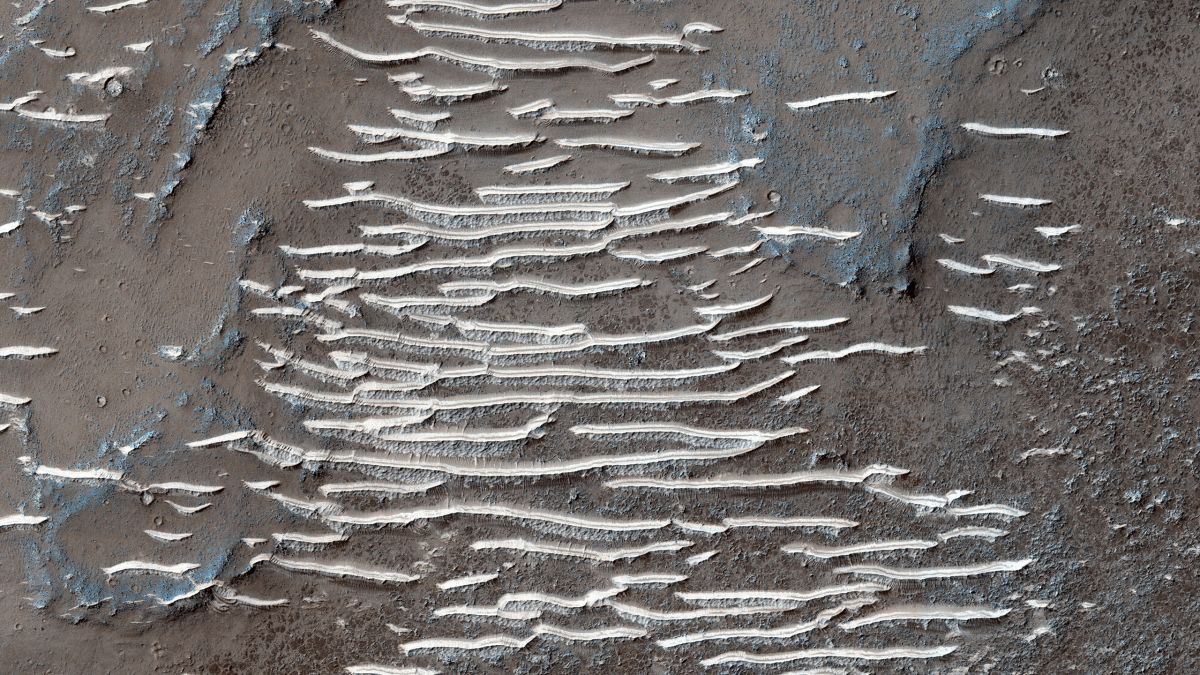Scientists from the University of Arizona explained the origin of the ice steps, which are called transverse aeolian ridges. They can tell a lot about when liquid water disappeared on Mars.

Ice steps on Mars
When the first devices with high-quality cameras appeared in the orbit of Mars, many strange landforms formed by wind, ice and dust were found in many places on its surface. In particular, the images obtained by the Mars Reconnaissance Orbiter 2015 clearly show something similar to the ice steps that are located on the slope of the dune.
The image was obtained from a region called the plain of the Sun. It is located south of the giant Valles Marineris and the Noctis Labryinthus. These amazing formations were called transverse aeolian ridges or TAR.
TAR is found in different areas of Mars and can have different shapes. They are usually larger than a grain of sand, but smaller than a dune, and consist of Martian dust cemented with ice.
Water and TAR
Until now, no one knows exactly how TAR is formed. Scientists from the University of Arizona have suggested that this begins when large sand particles roll over smaller ones under the influence of wind until they catch on something. Others are “hiding” from the wind behind them. Gradually, fine dust sticks around them and cementation with ice occurs.
Scientists carefully examined the TAR in all the images and found on the surface of the ridges a net of channels that were once made by lava or, possibly, another liquid. Both options intrigue scientists, because it is believed that both tectonic processes and liquid water disappeared from the surface of the planet hundreds of millions of years ago.
It is quite possible that a new study will show that from time to time over the past billion years, the climate of Mars has changed towards a more favorable one. If this happens, then finding traces of life by the Perseverance rover becomes more likely.
According to www.space.com
Follow us on Twitter to get the most interesting space news in time
https://twitter.com/ust_magazine

